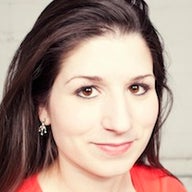Books | Freeze frame

Mark Kurlansky, first-rate biographer and author of Birdseye: The Adventures of a Curious Man(Anchor Books, $15.95, paperback), is the paragon of a reliable narrator. His new book corrects decades-old inaccuracies, rises above the lazy habit of recreating dialog, and directly confront his protagonist's flaws.
About frozen-food revolutionary Clarence Birdseye and his enduring brand, Birds Eye, Kurlansky writes, “The real argument is whether in changing our eating habits, Birdseye made life better.”
This is a critical question as the world tackles the displacement of the farming industry, genetic food modification, corporate resistance to nutritional reform, and obesity in adults and children.
After financial woes forced Birdseye to abandon his science curriculum at Amherst College, he was hired by the U.S. Biological Survey in 1910 as part of a three-man team dispatched to Montana to research the cure for spotted fever. His mission was to collect engorged ticks from wildlife, and according to Kurlansky, Birdseye killed 717 animals. Next, he sought adventure in Canada, where hunting and fishing for food in arctic temperatures led him toward his life legacy.
Birdseye did not invent frozen food nor the first freezer. Instead, he fortified the Inuit tradition of fast freezing, now known as “the odd commercial oxymoron ‘fresh frozen.’” He believed his practice was vastly superior to canning, salting, smoking, and freezing food so slowly that spoilage was inevitable.
First in the Canadian province of Newfoundland and Labrador, and eventually under the moniker of Birdseye Seafood Inc. (later the General Seafoods Corporation) in Gloucester, Massachusetts, Birdseye caught, prepared, froze, and packaged fish to refine his technique.
His innovations often eclipsed their practical execution. In 1927, Birdseye froze nearly 1.7 million pounds of seafood, much of it meant for the landlocked Midwest. Yet the U.S. infrastructure was erratic, plus “…there were no trucks or train cars for frozen food…warehouses for frozen food to ship were not cold enough…and retail stores had no equipment cold enough for holding or displaying.”
The turning point came just before the Great Depression, when cereal heiress Marjorie Merriweather Post persuaded her family to buy Birdseye’s company for an astounding $23.5 million, creating a new conglomerate called General Foods. Birdseye finally had the backing to install top-grade freezers in grocery stores, but cost remained a hurdle. “A top-quality steak often sold for less than thirty cents,” Kurlansky writes. “It was inevitable that frozen food had to cost a few cents more than the fresh food it was made from.” Prices didn’t drop until major competitors to Birds Eye emerged in the 1940s.
Ultimately, public demand necessitated an expansion from Birds Eye's initial 27 product line (lamb chops, cherries, the ever-popular green peas). Between 1932 and 1934, an additional 100 frozen foods were added to supermarket shelves (Birdseye’s forays into frozen shark and frozen moose were nixed).
During and after World War II, many women entered the work force, and frozen food became a convenient staple in the household diet. Today, global sales total in the hundreds of billions of dollars per year.
A journalist who previously earned his living as a commercial fisherman and a dock worker, Kurlansky has penned two dozen books. Birdseye was an easy choice for this 10-chapter, 250-page narrative, with a structure resembling an obituary (death in 1956, followed by a chronological biography).
Kurlansky previously wrote about Birdseye in the James Beard Award-winning Cod: A Biography of the Fish That Changed the World(Penguin, 1998), the New York Times bestsellerSalt: A World History (Penguin, 2003),andThe Last Fish Tale: The Fate of the Atlantic and the Survival in Gloucester, America’s Oldest Fishing Port and Most Original Town(Riverhead, 2009).
Although he admires Birdseye, who held hundreds of patents including the still-used reflecting lightbulb, Kurlansky acknowledges that his subject did not share the author’s own passion for environmentalism. “He would probably be perplexed by some of the concepts of the modern world such as the endangered species list, the whale hunting ban and marine mammal protection, limits on overfishing, the organic food movement that shuns pesticides and antibiotics, [and] the virtues of eating locally grown food.”
In hindsight, Birdseye was unconsciously inclined to launch his empire because he was born in Brooklyn in 1886, at a time when New York City used more ice than anywhere else. The question is, did his methodology improve our health and lives?
Kurlansky shares a personal anecdote about how his father longed for an off-the-rack suit, mostly because he was the son of a tailor. "We are all more reactive of the conditions we inherit than we realize," he writes.
Some of our own childhoods may likewise have been shaped by memories of eating yucky frozen food, so as adults we might be more likely to explore both progressive and antiquated substitutes.
I personally like the notion of seeing where my food is grown, and watching debates about whether we should be Whole Foods-carting vegetarians or farm-to-table omnivores. Science can only educate us as we choose what to eat, and nothing can be achieved by discouraging those who learn for a living, like Clarence Birdseye.
This post was originally published on Smartplanet.com